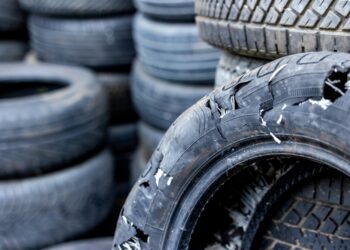 The Sustainable Packaging Coalition (SPC) recently released a comprehensive study on the availability of recycling in America to help promote change among industry players.
The Sustainable Packaging Coalition (SPC) recently released a comprehensive study on the availability of recycling in America to help promote change among industry players.
Here are five key takeaways from the recycling accessibility report from Adam Gendell, associate director of SPC, which is a project of GreenBlue, the organization behind the How2Recycle labels.
1. What is the biggest surprise from the report?
That only around 60 percent of Americans have a curbside receptacle. That was a surprise. In glass-half-empty terms, we learned that four out of ten don’t have curbside recycling. Our study found that 73 percent have the opportunity to receive a curbside receptacle at their residence, but too many must rely on subscription-fee-based, private haulers to receive curbside service, and most of them aren’t jumping through those hoops to receive their curbside receptacle. At the end of the day, curbside recycling is there for only at six out of 10 Americans.
2. What are the biggest changes that could come as a result of this research?
I hope that our study challenges the idea that access to recycling is not a barrier. The top level finding that 94 percent of our population has some type of recycling program available sounds like it’s “problem solved,” but I hope we’ll create a more widespread recognition that many people do not have quality and convenient recycling programs. There is still plenty of work to be done to improve access to recycling. Only 53 percent [of U.S. residents] have an automatically provided curbside program, which we consider to be the best and most likely system to be used.
At the end of the day, curbside recycling is there for only at six out of 10 Americans.
For the How2Recycle label, it’s great to have this robust and comprehensive new data set on the acceptance of so many different types of packaging, which helps us understand the packages that deserve to be called recyclable. We also want How2Recycle to look deeper than the acceptance of packaging in collection programs, so we’d love to see studies with equal rigor that look at sortation in MRFs and compatibility with reprocessing operations.
3. How will this affect programs throughout the country as they consider changes and improvements to their services?
I hope programs will improve and harmonize their messaging around the types of packaging that are accepted and prohibited. We suspect too many things are left unsaid on the consumer-facing recycling guidelines that our study analyzed. In fact, we generated some data that can tell us which types of packaging tend to be most often left ambiguous in recycling program instructions. It will be interesting to make a top-10 list of un-mentioned packaging types. Improving consumer-facing guidelines may be the lowest-hanging fruit of 2016. Giving clear instructions about what’s in and what’s out would certainly help the overall health of recycling.
4. What is the good news and bad news that you take away from this report?
The good news: We were glad to see widespread acceptance of many packaging types like aerosol containers and polypropylene containers. We didn’t know what we would find, but we believe there’s no reason these materials shouldn’t be included in recycling programs, so it was encouraging to see those numbers. I think the glass container industry received good news as well. For all that we hear about glass declining in favor with recyclers, our study showed it is accepted in the programs available to a very large majority of consumers. [The study found glass was accepted for recycling in at least 60 percent of communities.]
The bad news goes back to the idea that too many Americans aren’t provided quality access to recycling. If we hypothesize that only those with curbside receptacles are really likely to recycle a substantial amount of material, then even the materials with wide acceptance will still struggle to see high recycling rates. Because we looked at acceptance in available recycling programs, we found some high acceptance rates – many types of packaging accepted in programs available to a substantial majority of our population. Taken at face value, this suggests consumer ambivalence towards recycling is to blame for low recycling rates. But if we only look at acceptance in the good, likely-to-be-used recycling programs, the findings [track] closer to these materials’ reported recycling rates.
5. What do you think the next step should be to increase access in the U.S.?
The packaging industry now has a list of 2,000-plus communities and the types of packaging accepted in their recycling programs. The programs not accepting particular types of packaging should probably expect some phone calls from the packaging industry organizations representing those materials. The first step to increase access for a given type of packaging is to understand why it’s not more widely accepted.
The biggest opportunities for the recycling industry aren’t going to be easily realized. Municipalities need to implement more universal curbside programs. Those curbside programs need to be extended to large multi-family complexes. Conventional curbside bins need to be swapped out for rolling carts.
These steps require significant investment of resources, and particularly in the case of providing convenient access to recycling for multi-family dwellings, a healthy dose of creativity. The easiest, though still challenging, first step should be harmonizing the consumer-facing guidelines. But none of these are straightforward accomplishments to pursue. It’s clear we all have our work cut out for us.

























